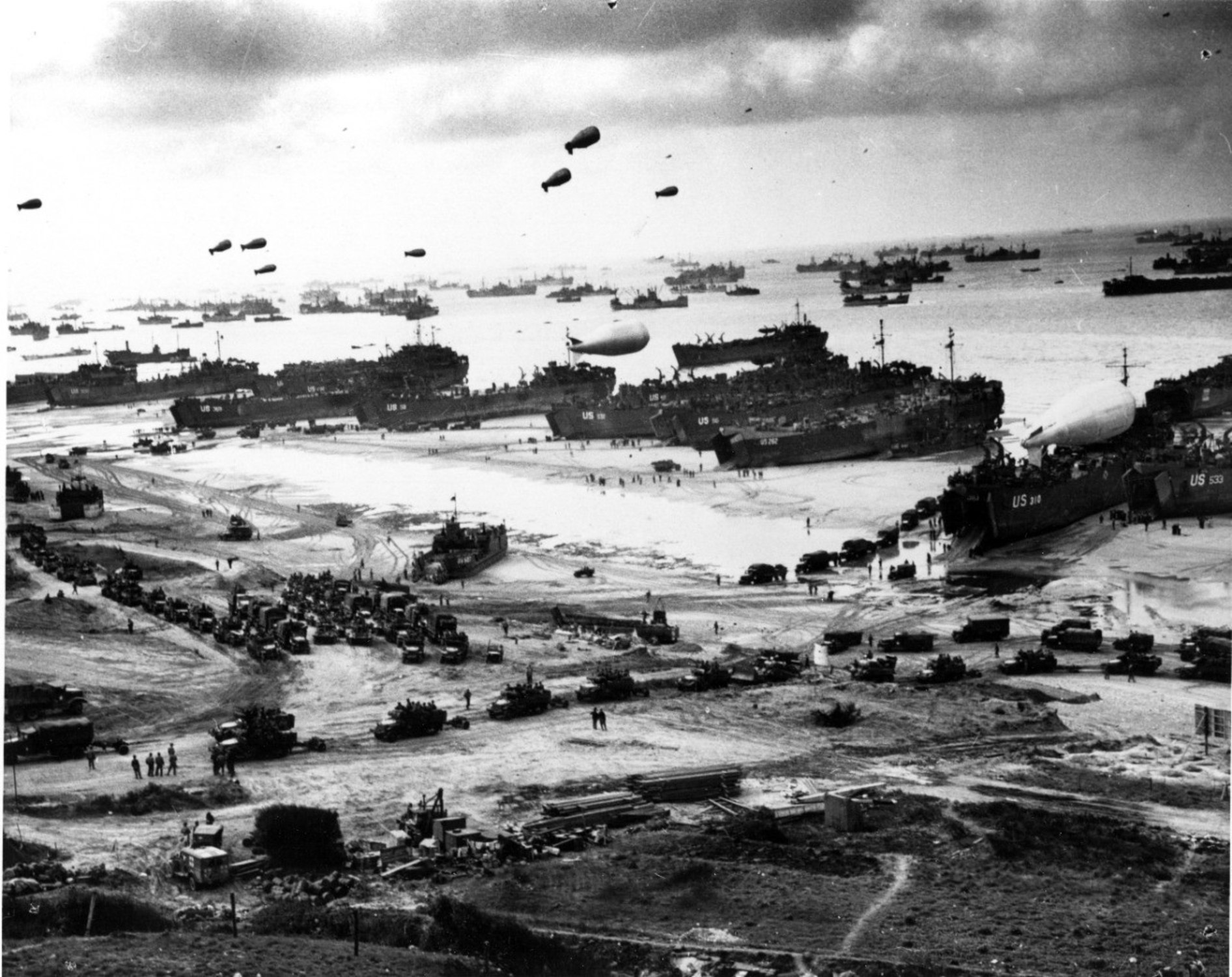
- Home
- An unprecedented endeavour
- Assessment of the landings
An Allied success
By the evening of 6 June 1944, some 156,000 Allied soldiers had landed in Normandy (133,000 by sea, 23,000 by air). In all five assault sectors, the German defences were overcome. Human losses were relatively minimal (1.4% at Utah, 1.7% at Gold, 3.35% at Juno and 2.2% at Sword), with the exception of the Omaha sector (7%). All sectors combined, the Allies suffered 10,000 dead, wounded or missing soldiers. This initial Allied success, however, had to be consolidated in the following days, first by fending-off German counter-attacks, and then establishing a continuous bridgehead on the continent. Eight weeks of intense combat were required to finally break through the German front west of Saint-Lô at the end of July. During all this time, logistics played a key role. The landing of troops and equipment continued until early July 1944 on Sword Beach, September for Juno Beach, and November for Gold, Omaha and Utah Beaches.
The Kriegsmarine facing the D-Day landings
Although Nazi Germany was expecting an Allied landing in Europe in 1944, several factors impeded its defences. The construction of the Atlantic Wall, begun in 1942, had yet to be completed, the German air force has suffered heavy losses in February-March 1944, and while the Kriegsmarine had surface ships and submarines in the Atlantic and North Sea, it lacked large units.
However, a few rare wrecks in the Baie de Seine provide evidence of the German presence shortly before D-Day. The M 39 (M for Minensuchboot) was a minesweeper commissioned on 5 May 1942. Following the Battle of the Atlantic, the ship was deployed in the Channel to escort convoys. On 24 May 1944, it was torpedoed by a British patrol boat off Juno Beach and broke in two, sinking and killing seven. The Greif was a German Môwe type torpedo boat, commissioned in 1927. Assigned in May 1943 to the 5th Flotilla at Cherbourg, it was used to attack Allied ships in the Baie de Seine. It was bombed by the Royal Canadian Air Force on 24 May 1944, while sailing from Cherbourg to Le Havre. Heavily damaged, it was scuttled by its crew north-west of Ouistreham.
On D-Day, the Nazi army was taken by surprise. Most of the Allied naval loses were due to bad weather, rather than the Kriegsmarine’s defences. Nevertheless, during the following months the German fleet and air force maintained pressure on the Allied landing operations in the Baie de Seine. In total, some thirty Allied units in this zone fell victim to German mines, torpedoes or bombs.




